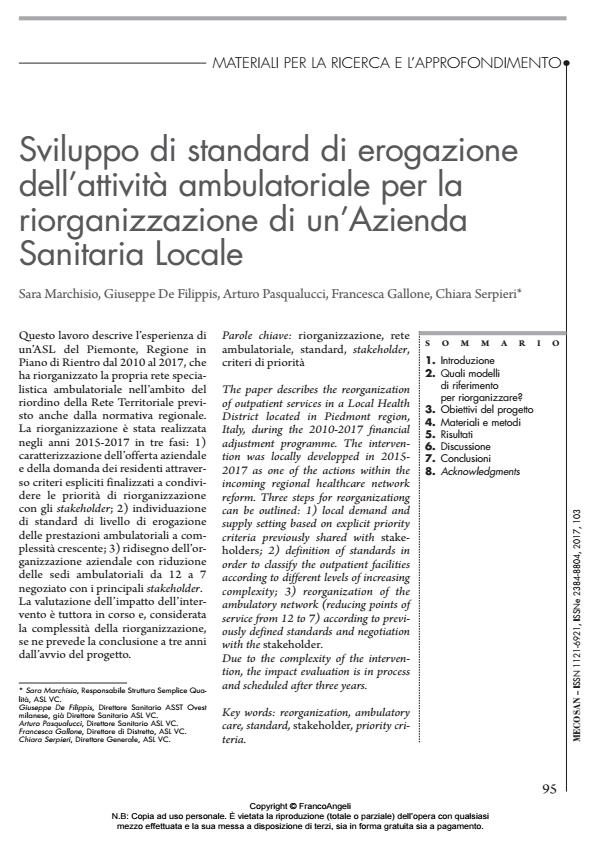Sviluppo di standard di erogazione dell’attività ambulatoriale per la riorganizzazione di un’Azienda Sanitaria Locale
Journal title MECOSAN
Author/s FIASO Federazione Asl e Ospedali
Publishing Year 2018 Issue 2017/103
Language Italian Pages 21 P. 95-115 File size 23941 KB
DOI 10.3280/MESA2017-103007
DOI is like a bar code for intellectual property: to have more infomation
click here
Below, you can see the article first page
If you want to buy this article in PDF format, you can do it, following the instructions to buy download credits

FrancoAngeli is member of Publishers International Linking Association, Inc (PILA), a not-for-profit association which run the CrossRef service enabling links to and from online scholarly content.
The paper describes the reorganizationof outpatient services in a Local HealthDistrict located in Piedmont region,Italy, during the 2010-2017 financialadjustment programme. The interventionwas locally developped in 2015-2017 as one of the actions within theincoming regional healthcare networkreform. Three steps for reorganizationgcan be outlined: 1) local demand andsupply setting based on explicit prioritycriteria previously shared with stakeholders;2) definition of standards inorder to classify the outpatient facilitiesaccording to different levels of increasingcomplexity; 3) reorganization of theambulatory network (reducing points ofservice from 12 to 7) according to previouslydefined standards and negotiationwith the stakeholder.Due to the complexity of the intervention,the impact evaluation is in processand scheduled after three years.
Keywords: Reorganization, ambulatorycare, standard, stakeholder, priority criteria
- Outsourcing, Delocalization and Firm Organization: Transaction Costs vs. Industrial Relations in a Local Production System of Emilia Romagna Massimiliano Mazzanti, Sandro Montresor, Paolo Pini, in SSRN Electronic Journal /2007
DOI: 10.2139/ssrn.1010304
FIASO Federazione Asl e Ospedali, Sviluppo di standard di erogazione dell’attività ambulatoriale per la riorganizzazione di un’Azienda Sanitaria Locale in "MECOSAN" 103/2017, pp 95-115, DOI: 10.3280/MESA2017-103007